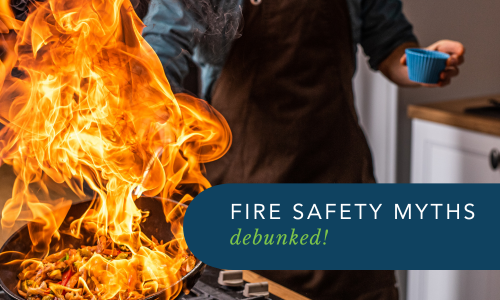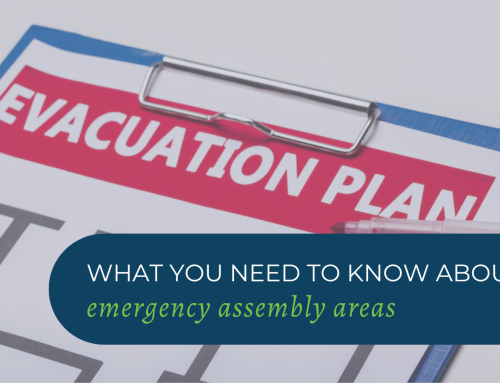Fire safety is something that we should all take seriously. Still, unfortunately, there are many myths and misconceptions that can put lives at risk. From how to properly handle a fire extinguisher to what materials are truly fire-resistant, many of us have been misinformed about fire prevention and safety protocols.
Let’s debunk some of the most common fire safety myths and provide accurate, science-backed information to ensure you’re better prepared for a potential fire emergency.
Myth 1: “You don’t need to worry about fire safety if you have a smoke detector.”
While smoke detectors are an important resource for alerting you to a fire, they are not enough on their own. A smoke detector is only effective if it’s properly installed and maintained. It’s crucial to test your smoke detectors monthly, change the batteries at least once a year, and replace the entire unit every 10 years.
However, having a smoke detector does not mean you should neglect other fire prevention measures. You still need to take proactive steps to eliminate or reduce fire risks, such as avoiding overloading power outlets, maintaining all of your electrical equipment in good order, practicing safe cooking habits, and ensuring flammable materials are stored properly.
Myth 2: “Fire extinguishers are only for trained professionals.”
Fire extinguishers are designed for use by any person who has been given the proper training to use them safely. Fire extinguishers can be lifesaving tools when used correctly and promptly. The key is knowing the “PASS” technique:
Pull the pin.
Aim the nozzle at the base of the fire (not the flames).
Squeeze the handles together.
Sweep from side to side.
It’s also important to familiarise yourself with the different types of fire extinguishers and understand what type (or Class) of fire each one is effective in extinguishing. If you’re ever unsure, get in contact with us to take our First Attack Fire Fighting training to learn everything about putting out fires.
Myth 3: “You can use any extinguisher to put out an electrical fire.”
This is a dangerous myth that can have catastrophic results. Water conducts electricity, so using water on an electrical fire can lead to electrocution. Instead, use a Carbon Dioxide fire extinguisher, which is specifically designed for electrical fires. If you can safely turn off the power supply to the electrical equipment, do so before attempting to extinguish the fire.
Myth 4: “A small fire can always be put out quickly.”
Not all fires are small or easy to control. Fires can spread quickly and unpredictably, depending on the combustible materials and the environment in which they’re ignited. Even small fires can escalate within minutes, especially if the fire involves flammable liquids, electrical wiring, or gases. If a fire starts, it’s important to remain calm and assess the situation. If the fire is small and contained, use a fire extinguisher or fire blanket. If it’s too large to combat and attempt to extinguish, evacuate immediately and call 000.
Myth 5: “Fire-resistant materials are completely safe in a fire.”
Fire-resistant materials can slow down the spread of fire, but they are not completely fireproof. These materials are designed to withstand heat and flames for a specific period, but they will eventually burn if exposed to high enough temperatures or sustained fire. For example, fire-resistant doors and windows provide valuable time during an evacuation, but they are not a guarantee that the fire won’t eventually breach them.
Additionally, fire-resistant materials are often rated based on the time they can withstand fire, such as 30 minutes, 60 minutes, or 90 minutes. Always check the specifications of fire-resistant materials and understand their limitations.
Myth 6: “Closing doors during a fire traps smoke and heat, making it worse.”
Closing doors during a fire is one of the best ways to protect yourself and the property. Keeping doors closed can prevent the fire from spreading and can also help contain smoke and heat in a specific area, allowing you more time to escape.
If you’re trapped in a room, it’s also helpful to use a wet cloth to cover your nose and mouth to filter out smoke and toxic gases. Always make sure you have an evacuation plan and know the safest exit routes.
Myth 7: “Fire drills are unnecessary for adults, only kids need them.”
Fire drills are essential for everyone, not just children. Whether at home, at work, or in a public place, practicing fire drills helps ensure that everyone knows exactly what to do in the event of a fire. Fire drills help to familiarise you with egress routes, fire alarms, and emergency procedures, reducing panic and confusion and building confidence during a real emergency. Remember, in many workplaces, fire drills are not just a good idea, they are also a legal requirement. Here at WEM we can come on site and run an evacuation drill explaining all the dos and don’ts and ensuring it is tailored to your needs.
Fire safety is essential for protecting your home, family, and workplace. Still, it’s just as important to separate fact from fiction. By debunking these common fire safety myths, we can help ensure that people are better equipped with the knowledge and tools to prevent and respond to fires effectively. Always keep fire extinguishers and fire blankets handy, test your smoke detectors regularly, and practice fire drills to stay prepared.
Remember, fire prevention and response preparation are the keys to staying safe. Don’t let myths put you or your loved ones in danger make sure you know the truth about fire safety, book a training session with WEM today to learn everything about fire protection!
GET IN TOUCH
Are you ready for peace of mind that your workforce is as safe and prepared as possible?
With a dedicated team of staff ready to help you meet compliance requirements and improve the overall safety of your workplace, all you need to do is get in touch.
Request your free audit today!



